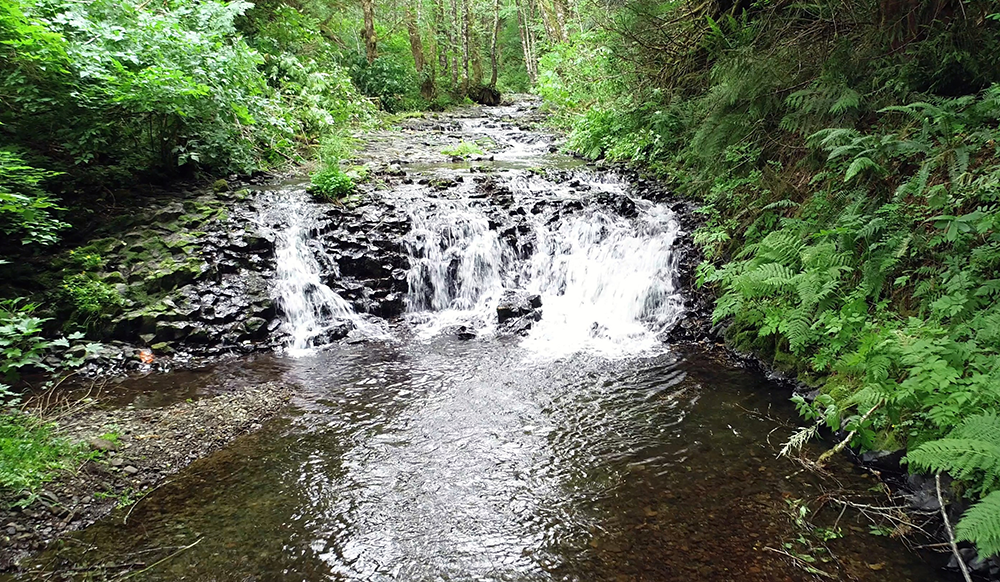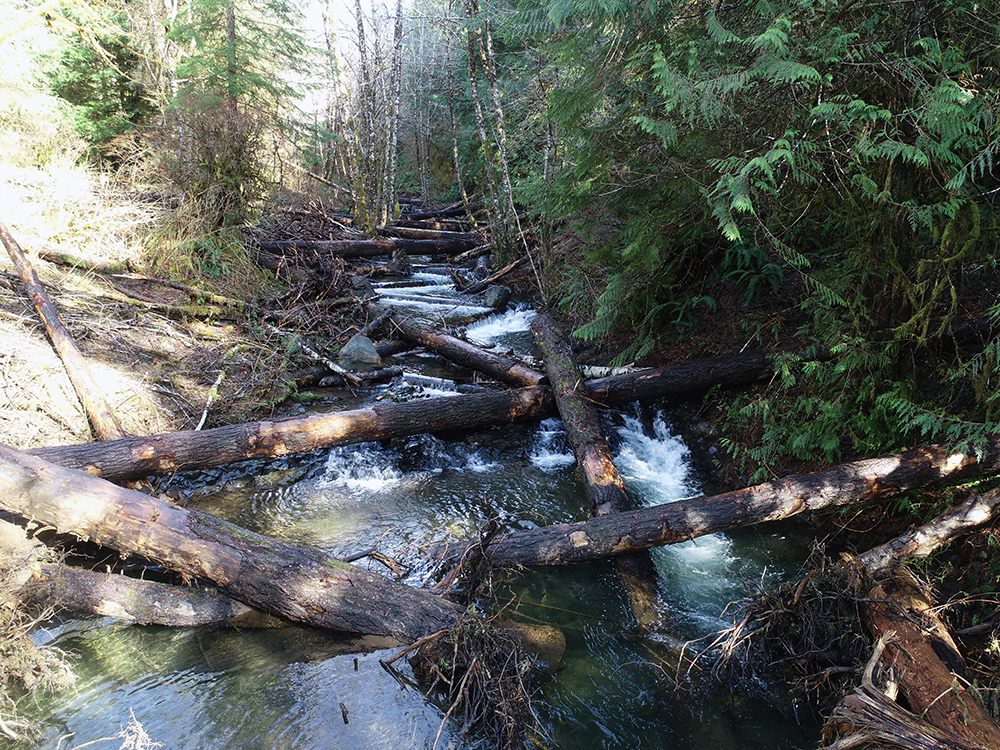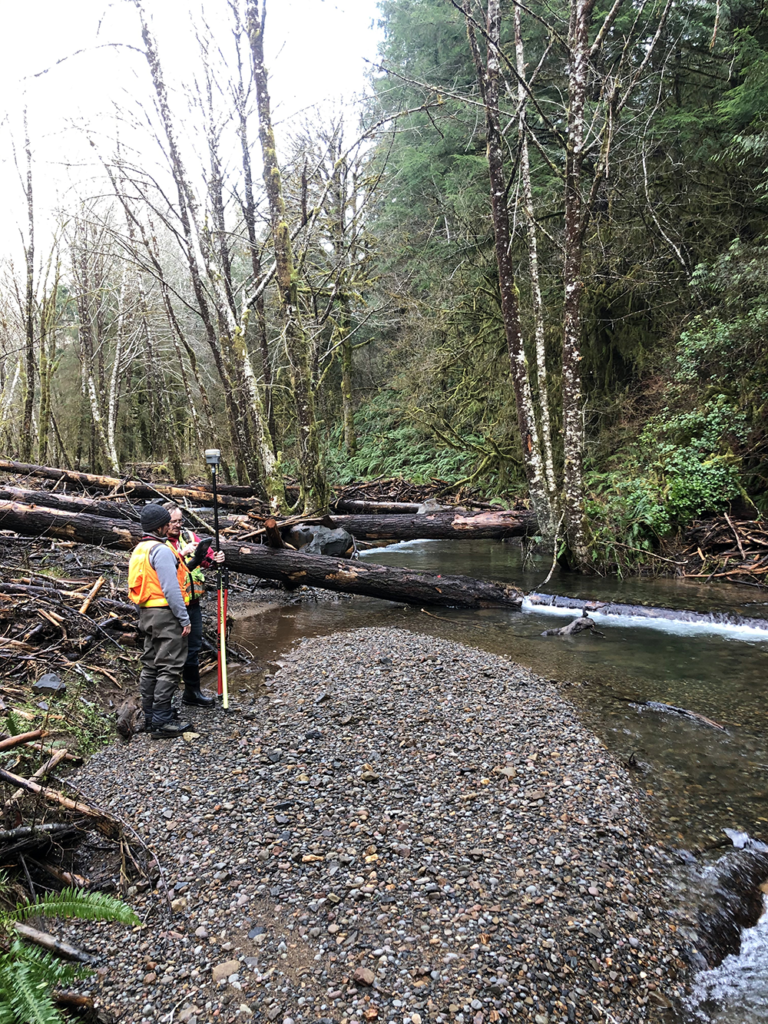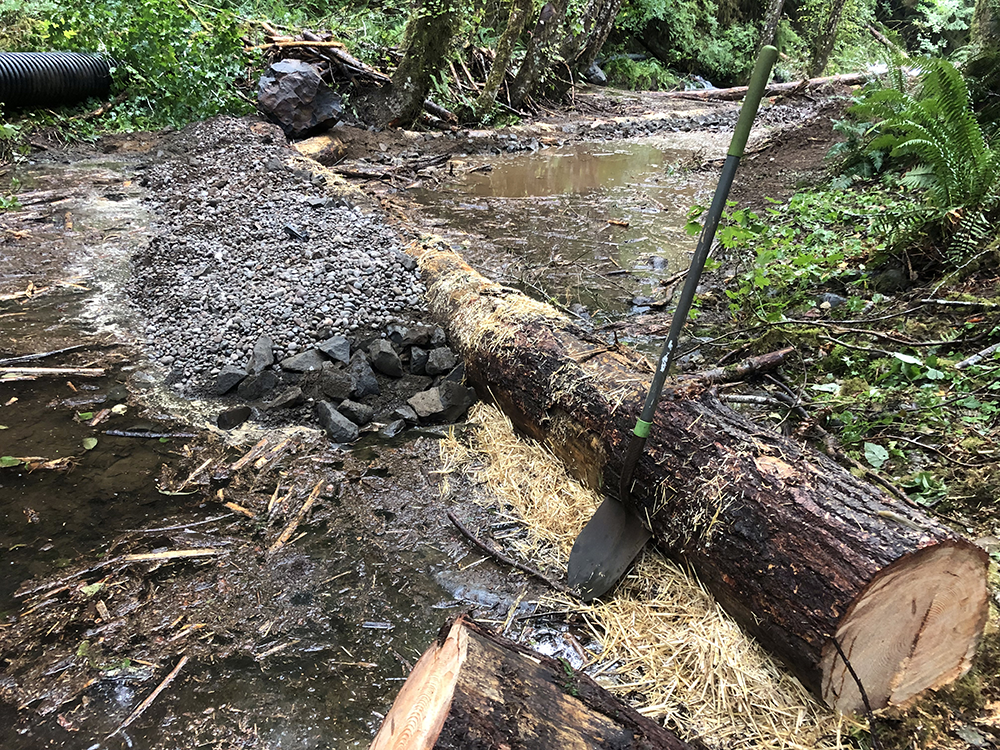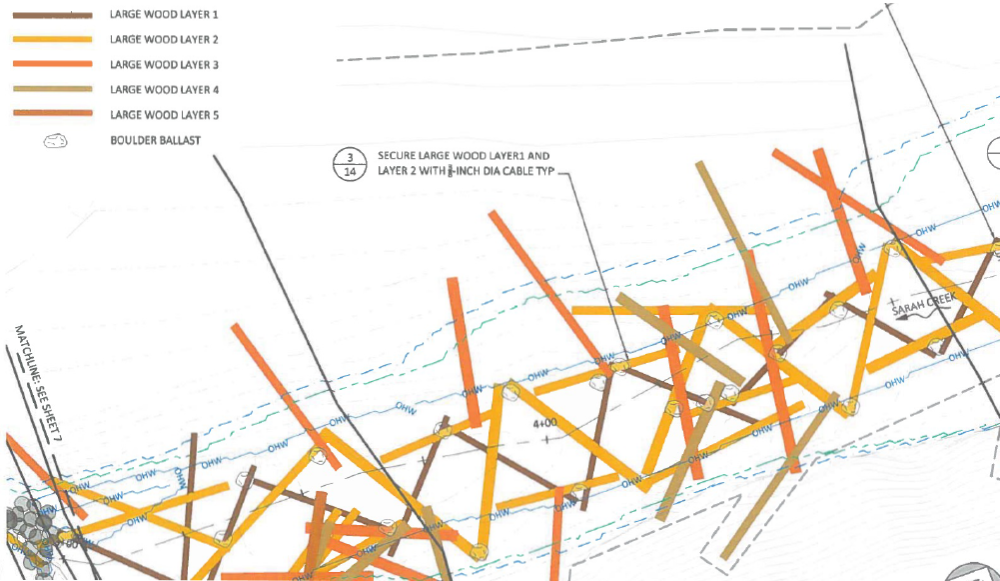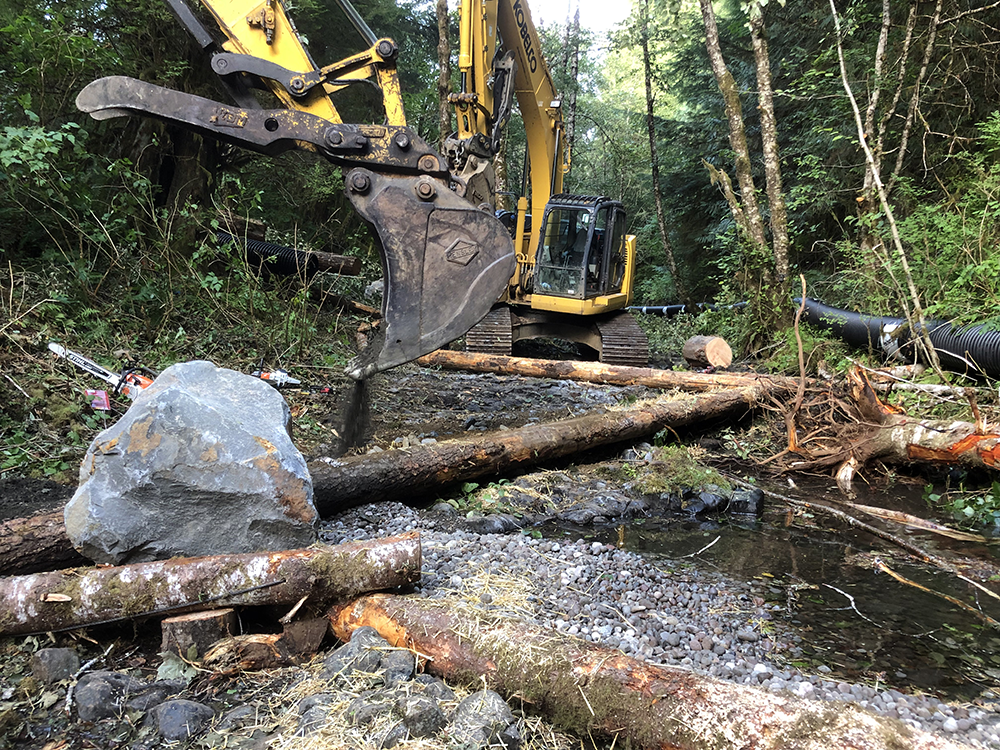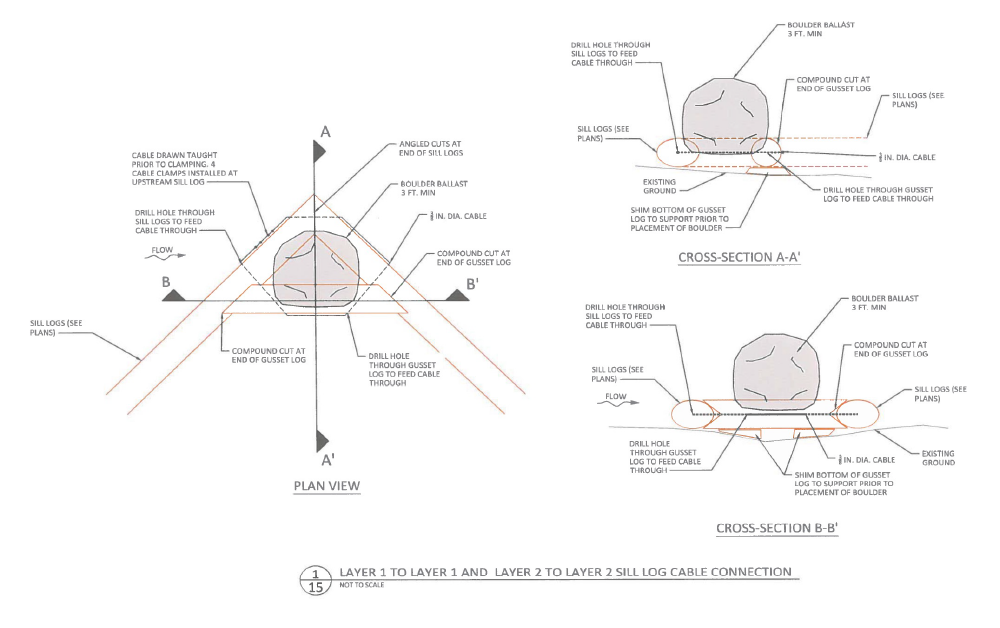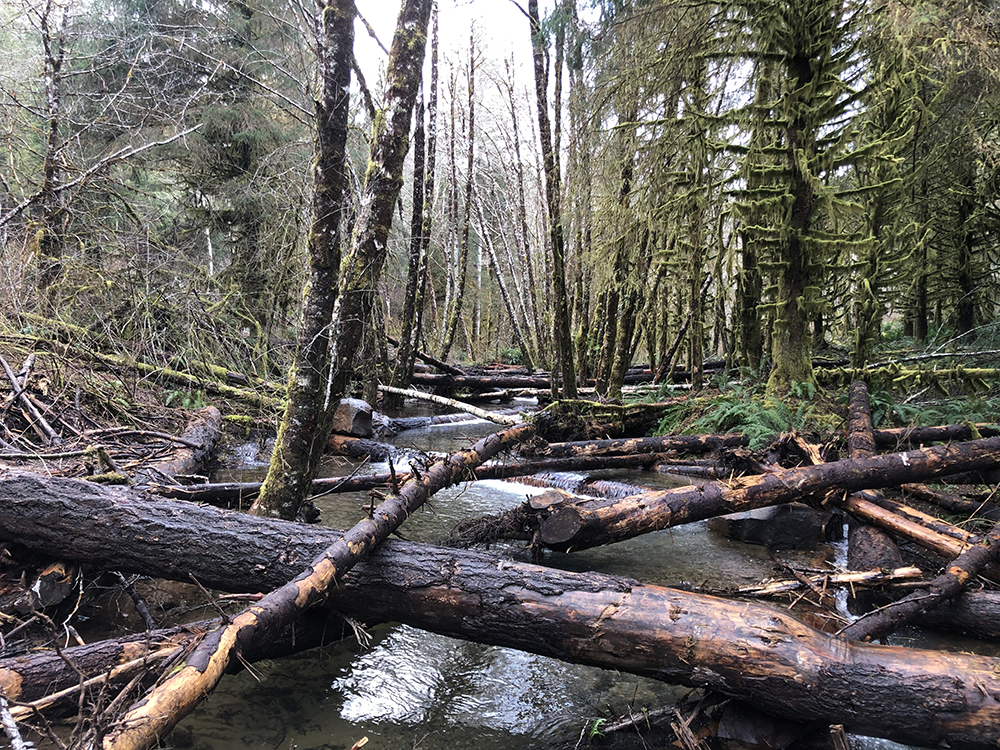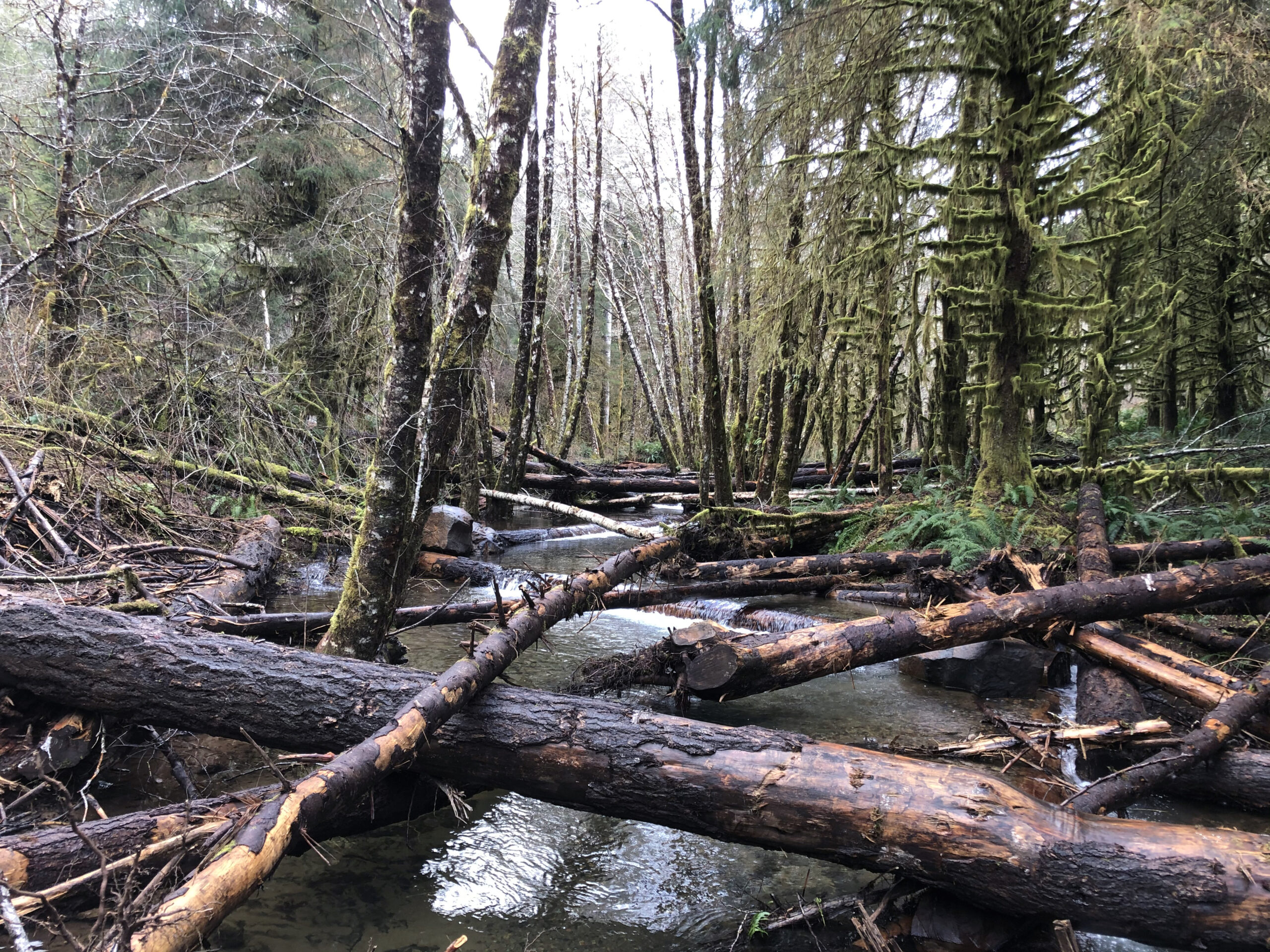
Sarah Creek Fish Passage
Sarah Creek is a tributary to Abernathy Creek where a 7-feet high bedrock waterfall was located approximately 300 feet upstream of its confluence with Abernathy Creek. A 600-feet long sheet of bedrock formed the stream bed upstream of the waterfall. The waterfall and supercritical flows through the upstream bedrock reach impeded coho salmon passage. The fish passage design for this project included a roughened channel fishway in the reach downstream of the waterfall. The roughened channel has three pools for resting areas and backwaters the existing waterfall to enhance passage into the upstream reach.
Parr Excellence provided final engineering design, construction observation, and pre-construction and post-construction surveys to the Cowlitz Indian Tribe for the Sarah Creek Fish Habitat Enhancement Project.
The 600-feet long bedrock reach upstream of the waterfall was treated with a matrix of large wood with sill logs. The sill logs were placed over compressed straw and slash to seal the sill logs to the underlying bedrock to facilitate accretion of gravel upstream of the sill logs. Two gradations of gravel were placed upstream of the sill logs to further seal to the sill logs to assist in accreting gravel over the existing bedrock. The gravel gradations consist of a coarse gradation that was overlaid with a finer layer of stream gravel. The sill logs span the channel and accrete gravel over the bedrock to enhance fish habitat by providing holding pools, cover, and substrate suitable for spawning and rearing. The sill logs through the bedrock reach were overlaid with channel spanning large wood to provide roughness and resting areas during high flows.
This project was constructed during the summer of 2019. Following construction, this project was surveyed with UAV mounted LiDAR and coupled with aerial photogrammetry to document the work performed by the Cowlitz Indian Tribe. Comparison of pre and post-project 3-dimensional surfaces show two to three feet of gravel had accreted at the upstream portion of the project resulting from a January 2020 flow. Continued gravel accretion is anticipated throughout the project reach as future gravel transporting flows occur.
The Sarah Creek Fish Habitat Enhancement Project included an innovative application of boulder ballast for large wood structures placed over bedrock. The project site is owned by the State of Washington Department of Natural Resources. The project design submittals included DNR review and comment, and negotiations with DNR Aquatics staff to develop an acceptable design for DNR. DNR design review comments and negotiations allowed for a limited number of boulders to be used as gravity ballast. DNR would not allow large wood to be fixed to the underlying bedrock. The limited number of boulders that had to sit on top of the channel spanning sill logs were subject to rolling off sill logs during high flows.
The solution to this design problem was addressed by creating a “boulder nest” with a triangular log configuration at the sill log corners with steel wire rope stitched through the logs to provide a stable foundation for gravity boulder ballast.
The project also includes a unique application of existing techniques using competing stream habitat restoration philosophies. Early stream habitat restoration designs utilized what can be referred to as a prescriptive philosophy. The prescriptive philosophy sees a problem and prescribes a solution much like the boulder ballast problem and solution identified above. For example, the prescriptive approach would identify a general lack of pools in a stream and would prescribe excavating pools as a solution. This example of forming pools through a prescriptive approach could be problematic if sediment transport were not well understood. In some cases, pools would simply fill in during the next flood event that was capable of significant bedload transport. Over time, a (stream) process-based approach has become preferred in the stream habitat restoration industry. In the example of lack of pool habitat, the process-based approach would identify stream processes of sediment supply and potential for deposition. It recognizes that the way to form pools in the stream is to span the channel with large wood structures that provide hydraulic controls that accrete sediments to lift the bed of the stream up in elevation and pools are created by lifting the rest of the stream up through the natural process of deposition. Intended pool locations include large wood placements that produce local scour and do not allow sediments to deposit.
The Sarah Creek Fish Habitat Enhancement Project includes a prescriptive approach to the bedrock reach where supercritical flows could produce velocity barriers to fish passage. The design prescribed sill logs to backwater pools within the bedrock reach and provide velocity breaks to allow resting areas for migrating fish. This prescriptive approach was overlain with the process-based approach. The process-based approach recognizes that increased water surface elevations resulting from the prescriptive approach will eventually kill red alder trees growing on the streambanks and provide channel spanning logs that will recruit downed trees and further allow natural processes to build upstream bed elevations to replicate historical habitat conditions.
This project provides future value to the public by providing passage for coho salmon to habitats that they could not previously access. Providing fish passage access to high-quality habitat has been shown to be one of the most effective restoration strategies. We expect this access to further increase native salmonid populations. With this project, the public can perceive the value of salmon habitat restoration activities because the project is supported by intensive monitoring to objectively show its effectiveness in increasing the production of salmonid smolts.
This is one of ten projects that have been implemented by the Cowlitz Indian Tribe in the Abernathy Creek Watershed. Abernathy Creek is part of the Lower Columbia, Intensively Monitored Watershed (IMW). The (IMW) program is designed as a Before-After Control-Impact (BACI) study in order to determine whether and how habitat restoration activities influence the abundance of salmon and steelhead (Zimmerman 2012). The Lower Columbia IMW has been monitoring out-migrating smolts since 2001. Outmigrating smolts from Abernathy Creek began to exceed those of the control watershed in 2018, and they have continued to outnumber the control watershed in 2019 and 2020.
Pacific salmon populations have an enormous social value in the state of Washington. This project shows Washington salmon recovery funds being effectively applied to the restoration of ESA-Listed salmon populations on Washington DNR land.

In 2021, Parr received an ACEC Washington Best in State Gold Award for Unique or Innovative Applications, for our work on the Sarah Creek Fish Passage project in Longview, Washington. It was our pleasure to work with the Cowlitz Indian Tribe on this important fish passage restoration.
